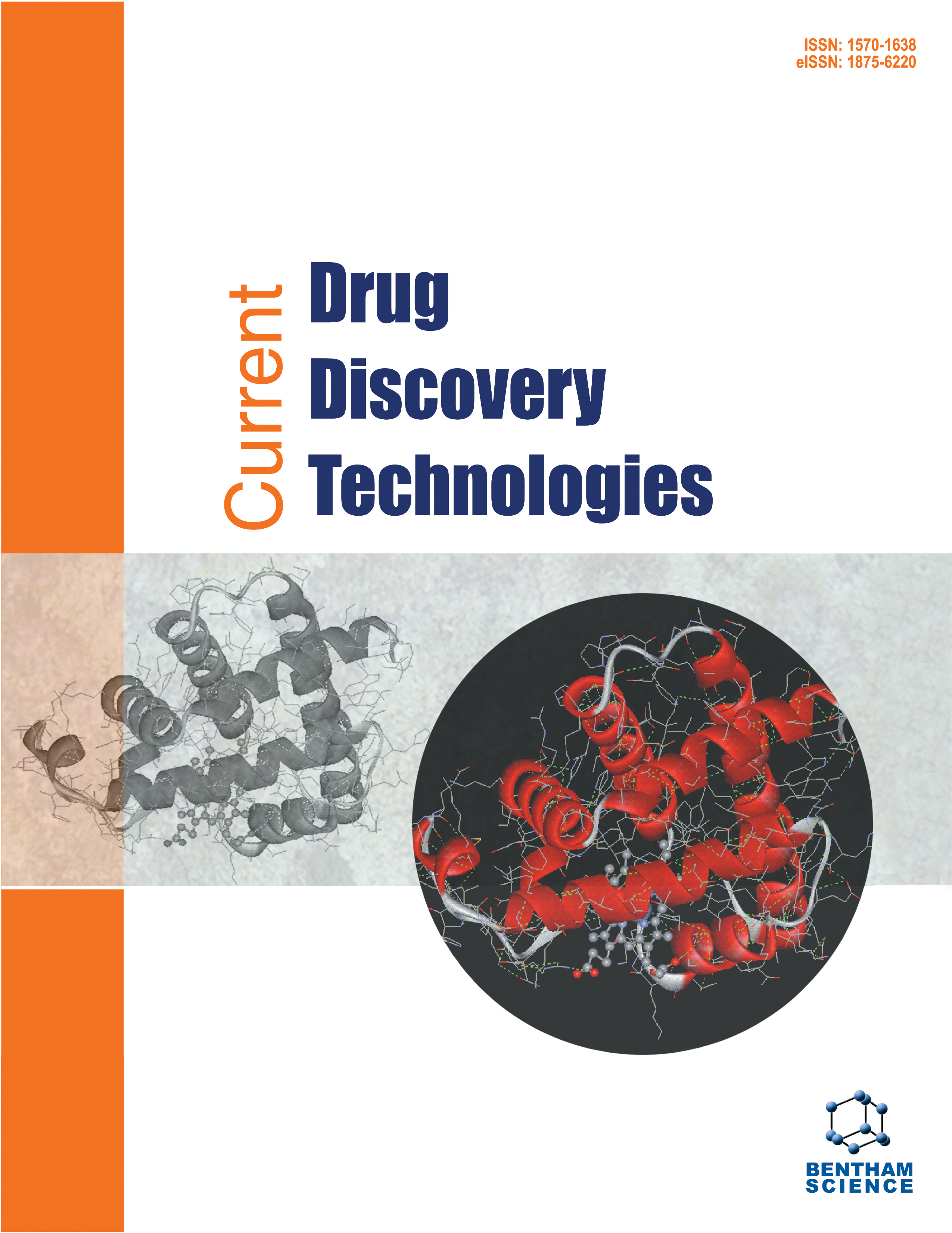- Home
- A-Z Publications
- Current Drug Discovery Technologies
- Previous Issues
- Volume 9, Issue 4, 2012
Current Drug Discovery Technologies - Volume 9, Issue 4, 2012
Volume 9, Issue 4, 2012
-
-
Immunotherapy with Tumor Vaccines for the Treatment of Malignant Gliomas
More LessAuthors: Divya Ajay, Luis Sanchez-Perez, Bryan D. Choi, Gabriel De Leon and John H. SampsonWith an average life expectancy of 14 months, Glioblastoma multiforme (GBM), is the most aggressive primary brain tumor. Our growing understanding of the immune system and its role in oncogenesis has helped develop cancer vaccines as a promising treatment modality against this disease. What follows is a comprehensive discussion on the history of immunotherapy and the various vaccine based therapies bein Read More
-
-
-
Fluorescence-Guided Malignant Glioma Resections
More LessAuthors: Ranjith Babu and David Cory AdamsonGliomas are the most common primary brain tumors and result in dismal outcomes when present at high grades. Surgery is the first-line treatment, and maximum safe resection is recommended. However, the infiltrative nature of malignant gliomas makes complete resection difficult as tumor margins are unclear. The use of fluorescence to delineate tumor margins intraoperatively has emerged as a safe and effective Read More
-
-
-
Targeted Radiotherapy for Malignant Gliomas
More LessAuthors: Daniel S. Oh, David C. Adamson and John P. KirkpatrickMalignant glioma remains a disease with poor prognosis despite recent advances in the multidisciplinary care of this disease. Herein we review the evolution of and recent advances in radiation therapy for malignant glioma that have allowed for more targeted therapy, potentially improving efficacy while decreasing normal tissue toxicity. Current and emerging techniques are presented, including stereotactic radiotherapy an Read More
-
-
-
Exploiting Metabolic Differences in Glioma Therapy
More LessAuthors: Francesca Galeffi and Dennis A. TurnerBrain function depends upon complex metabolic interactions amongst only a few different cell types, with astrocytes providing critical support for neurons. Astrocyte functions include buffering the extracellular space, providing substrates to neurons, interchanging glutamate and glutamine for synaptic transmission with neurons, and facilitating access to blood vessels. Whereas neurons possess highly oxidative metabolism and Read More
-
-
-
Stopping Cancer in its Tracks: Using Small Molecular Inhibitors to Target Glioblastoma Migrating Cells
More LessAuthors: Austin K. Mattox, Jing Li and David C. AdamsonGlioblastoma multiforme (GBM) represents one of the most common aggressive types of primary brain tumors. Despite advances in surgical resection, novel neuroimaging procedures, and the most recent adjuvant radiotherapy and chemotherapy, the median survival after diagnosis is about 12-14 months. Targeting migrating GBM cells is a key research strategy in the fight against this devastating cancer. Though the va Read More
-
-
-
Convection Enhanced Delivery of Macromolecules for Brain Tumors
More LessThe blood brain barrier (BBB) poses a significant challenge for drug delivery of macromolecules into the brain. Convection-enhanced delivery (CED) circumvents the BBB through direct intracerebral infusion using a hydrostatic pressure gradient to transfer therapeutic compounds. The efficacy of CED is dependent on the distribution of the therapeutic agent to the targeted region. Here we present a review of convection enhanced Read More
-
-
-
Chronopharmaceutics Based Modern Colon Specific Drug Delivery Systems
More LessAuthors: Akanksha Tiwari, Raj Kumar Shukla, Suresh Tiwari and Surti NaazneenColon-targeted delivery of bioactives has recently gained importance in addressing specific needs in the therapy of colon based diseases. Many approaches have been attempted for the development of colon-specific delivery systems, with not much success in the past. With the advancement in the field of chronobiology, modern drug delivery approaches have elevated to a new concept of chronopharmacology i. Read More
-
-
-
Emergence of Nanomedicine as Cancer Targeted Magic Bullets: Recent Development and Need to Address the Toxicity Apprehension
More LessMulti drug resistance and non specific targeting is a major problem with conventional therapy. To overcome this problem, nanoparticles (NPs) have emerged as an important tool to deliver conventional drugs, recombinant proteins, vaccines and more recently, nucleotides. NPs modify the drug release pattern, absorption, distribution, metabolism, excretion (ADME) and therapeutic response. This review focuses on the potential o Read More
-
Volumes & issues
-
Volume 22 (2025)
-
Volume 21 (2024)
-
Volume 20 (2023)
-
Volume 19 (2022)
-
Volume 18 (2021)
-
Volume 17 (2020)
-
Volume 16 (2019)
-
Volume 15 (2018)
-
Volume 14 (2017)
-
Volume 13 (2016)
-
Volume 12 (2015)
-
Volume 11 (2014)
-
Volume 10 (2013)
-
Volume 9 (2012)
-
Volume 8 (2011)
-
Volume 7 (2010)
-
Volume 6 (2009)
-
Volume 5 (2008)
-
Volume 4 (2007)
-
Volume 3 (2006)
-
Volume 2 (2005)
-
Volume 1 (2004)
Most Read This Month
Article
content/journals/cddt
Journal
10
5
false
en


